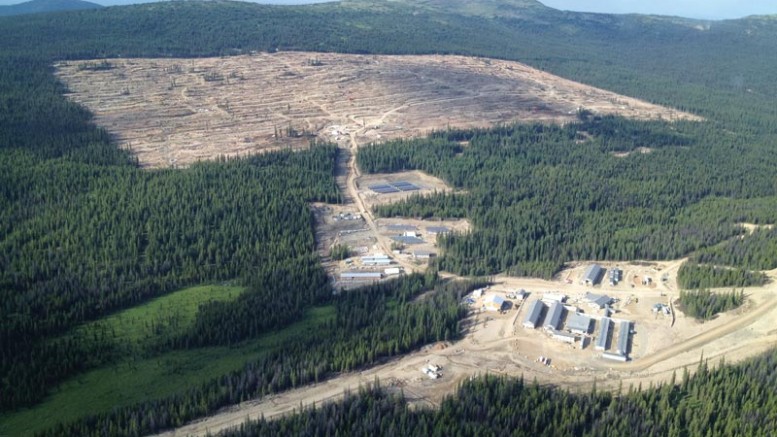VANCOUVER — Gavin Dirom, president and CEO of the Association for Mineral Exploration British Columbia (AME BC), told The Northern Miner during a phone interview that he was “surprised” and “concerned” when the B.C. government and Tsilhqot’in First Nation announced on Feb. 11 that it would negotiate aboriginal title across a land package twice the size of Vancouver Island in a prospective mineral district of B.C.
The accord — called the “Nenqay Deni,” or the “People’s Accord” — builds upon the precedent-setting Supreme Court of Canada decision in June 2014, which awarded primary control of nearly 1,900 sq. km of the land base in south-central B.C. to the small Tsilhqot’in First Nation.
The agreement gives the duo five years to work out which additional lands within the 66,000 sq. km area of central B.C. — stretching north of Quesnel to south of Lillooet — will be subject to Tsilhqot’in management and control, along with outlining who handles the infrastructure, education and other governance issues.
Private lands will not be involved in the negotiations.
Dirom says that although the association supports and applauds the reconciliation plan, the agreement is “largely problematic” for attracting mineral investment — not to mention poorly timed — considering B.C.’s mining industry is already weakened due to deteriorated market conditions.
“It’s clear that both the government and Tsilhqot’in will consult and engage with industry and others about this accord over the next five years,” he says. “And that seems reasonable, and it’s good, but we’re getting to this point now where the security of tenure is in question, and that’s problematic for attracting mineral investment.”
Projects under a cloud of uncertainty include New Gold’s (TSX: NGD; NYSE-MKT: NGD) Blackwater gold project, Avino Silver & Gold Mines’(TSXV: ASM; NYSE-MKT: ASM) Bralorne gold mine, Amarc Resources’ (TSXV: AHR; US-OTC: AXREF) Ike copper-molybdenum-silver project and Taseko Mines’ (TSX: TKO; NYSE-MKT: TGB) Gibraltar copper-molybdenum mine, in addition to its New Prosperity gold-copper project.
Dirom says the region covers 7,850 sq. km of active mineral or placer title, which have incurred over $520-million worth of exploration work in the past decade.
“We just wish we had been more involved in the lead up to this agreement — to help align and define the area in question as it was apparently done with respect to private property,” he says. “It’s not that our industry or association hasn’t been publically supportive of reconciliation — of course we support that, but we want to see a balanced and transparent dialogue about other interests and rights on the public land, and that’s not happening.”
With 51.1% of the land base in B.C. already locked under restricted or prohibited access, it’s no secret that B.C. is becoming an uphill battle for explorers to do business.
A report published by the AME BC in January paints a troubling picture for mineral exploration in the province, describing a bottleneck on land access that is reaching a critical threshold, and calling upon the provincial government to take action.
But in the wake of the recent accord announcement, the path forward has never been more uncertain, Dirom says.
“We have a timeline, but not much more clarity beyond that,” he says, noting that a joint-negotiating table comprised of government and Tsilhqot’in Nation representatives will lead negotiations over the next five years.
“Their drivers are clear, they’re talking about culture, language, healthy communities, education, land, resources and economic development, which are all important pillars,” he says. “But land and resources are relevant to us, and we desire to be at these tables and be involved in the conversation. We know we can play a positive role … and we’ll absolutely take them up on the opportunity to consult and engage with them on this further, but the uncertainty that it creates at this point is a problem for the industry.”


Be the first to comment on "AME BC caught off guard by Tsilquot’in, BC gov’t accord"